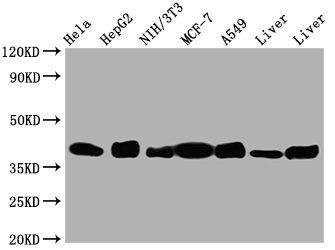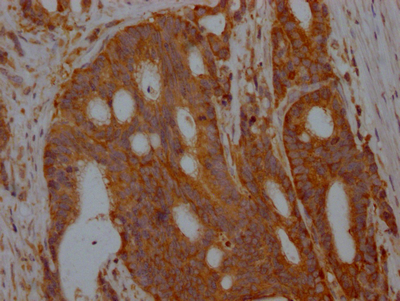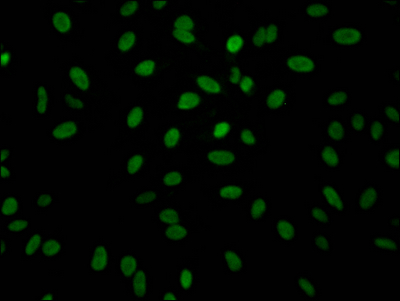B cells were produced by immunizing an animal with a synthesized peptide originating from human ALDOA. The B cells were then fused with myeloma cells to create hybridomas. The variable light (VL) and variable heavy (VH) domains of the ALDOA antibody-producing hybridomas' cDNA were sequenced to serve as a model for vector construction in the recombinant generation. The ALDOA monoclonal antibody gene-containing vector was transfected into cells for culture, and the ALDOA recombinant monoclonal antibody was obtained and purified from the cell culture supernatant using affinity chromatography. The specificity of the purified antibody was tested in ELISA, WB, IHC, and IF applications, and this antibody was determined to identify ALDOA protein from human, mouse, and rat samples.
The ALDOA protein is an enzyme that plays a crucial role in glycolysis, the metabolic pathway that converts glucose into pyruvate, yielding energy in the form of ATP. Specifically, ALDOA catalyzes the conversion of fructose-1,6-bisphosphate to glyceraldehyde-3-phosphate and dihydroxyacetone phosphate. This reaction is the fourth step in glycolysis and is important for generating energy in the form of ATP and precursor molecules for other metabolic pathways. In addition to its role in glycolysis, ALDOA has also been implicated in other cellular processes such as cytoskeleton organization, cell migration, and transcriptional regulation.








